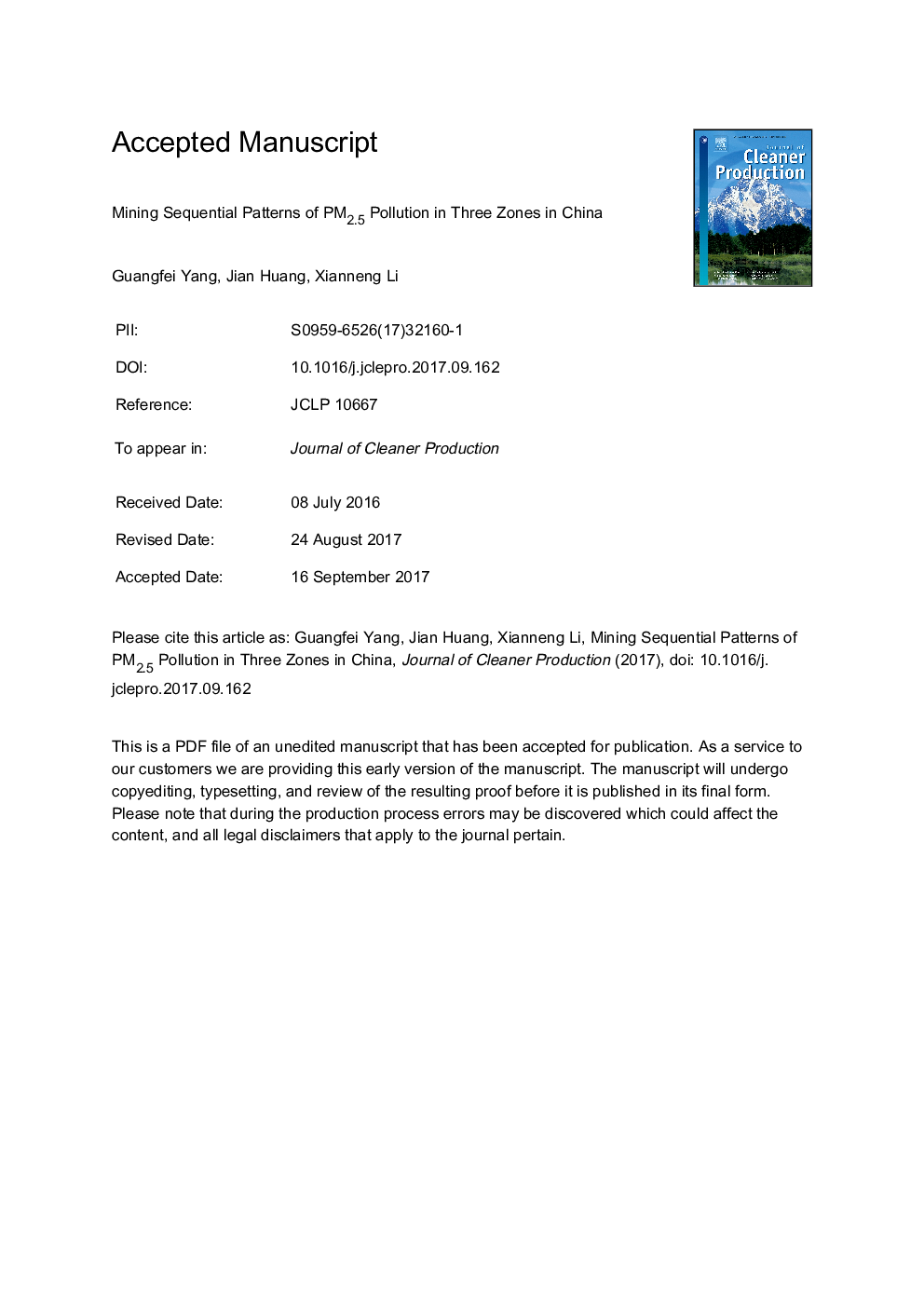| Article ID | Journal | Published Year | Pages | File Type |
|---|---|---|---|---|
| 5479226 | Journal of Cleaner Production | 2018 | 29 Pages |
Abstract
China has been suffering from severe PM2.5 pollution in recent years. Significant effort has been devoted to analyzing the chemical characteristics and emission sources of PM2.5 pollution. However, because air pollution is a complex problem with a broad scope, macro-level analysis is also required to systematically address this issue. In this paper, we analyze the spatial-temporal features of PM2.5 pollution and discover sequential patterns in cities located in three important zones in China, namely, the Bohai Sea, Yangtze River Delta, and Pearl River Delta regions. The sequential patterns reveal hidden associative relationships that could provide evidence to support united policy-making in different areas. Our results also reveal significant heterogeneities among the underlying relationships, while certain homogeneities do exist in some seasons in the three regions. Moreover, the relations to the monsoon systems and Huai River policy are further discussed to draw policy implications.
Related Topics
Physical Sciences and Engineering
Energy
Renewable Energy, Sustainability and the Environment
Authors
Guangfei Yang, Jian Huang, Xianneng Li,
